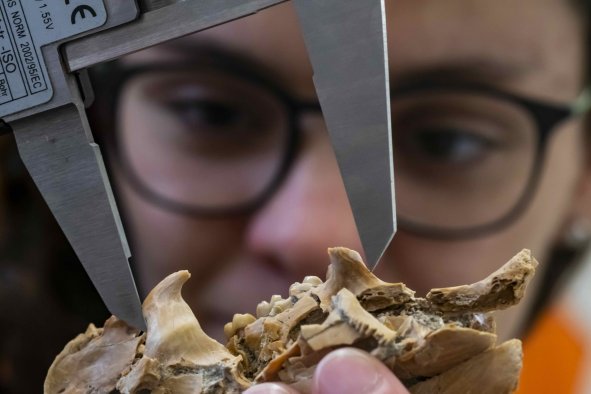Archaeologists have uncovered an "astonishing" set of horse burials in France that are believed to date to around 2,000 years ago.
A team with the French National Institute of Preventive Archaeological Research (INRAP) have identified nine pits with the remains of 28 horses in the commune of Villedieu-sur-Indre, located in the center of the country.
The horses were buried in a "spectacular display," although the circumstances surrounding their deaths remain something of a mystery. One hypothesis is that the horses were killed during battle, while another possibility is that they were sacrificed as part of a ritual.
To date, only two of the pits have been fully excavated. The first contains 10 complete horse skeletons that appear to have been carefully placed in the pit, all lying on their right side with their heads facing south.
The meticulous arrangement of the bodies indicates that the horses were buried shortly after their deaths. All of the horses are adult males likely over 4 years old. They are also small, measuring around 4 feet high at the withers.
The second pit to have been fully excavated is smaller and contains just two individual horse skeletons, resembling those in the larger pit.
Excavations of the remaining pits are ongoing, but researchers have found the remains of skulls and other bones on the surface, with 28 individual horses having been identified so far.
Archaeologists have also uncovered another pit containing the remains of two adult dogs of medium size, also carefully placed, lying on their left side with their heads to the west.
The animal remains came to light during excavations of a site dated to the 5th and 6th centuries that includes a number of buildings, ditches and a path from the early medieval period. But radiocarbon dates indicate that the animal remains are older, originating from the period 100 B.C. to A.D. 100.
Questions remain though regarding how the horses died. The researchers have ruled out a disease epidemic given that young horses and mares are missing. But it is possible that the deaths of the horses were linked to the Gallic Wars, which were waged by the Roman general Julius Caesar against several native tribes in Western Europe between 58-50 B.C.
"We think because of where they were buried that they were linked to the Gallic Wars waged by Julius Caesar in the 1st century B.C., but this is still just a theory," Isabelle Pichon, the head of the archaeological operation for INRAP, told The Guardian.
"We know there was an important battle and the Roman army passed not far from here, but we have so little evidence and so far we have found nothing to indicate how they died."
However, the researchers cannot exclude the hypothesis that the horses were killed and buried as part of a ritual—a practice that has been documented across Europe stretching back thousands of years. If this theory is correct, the large number of horses killed suggests that such a ritual would have been particularly important.
"It is an extraordinary discovery because of the rarity of such finds, but it is a mystery," Pichon said. "What we do know is that these horses were buried with particular attention. They weren't just thrown into the pit, so they were treated with care and respect."
Do you have a tip on a science story that Newsweek should be covering? Do you have a question about archaeology? Let us know via science@newsweek.com.
Disclaimer: The copyright of this article belongs to the original author. Reposting this article is solely for the purpose of information dissemination and does not constitute any investment advice. If there is any infringement, please contact us immediately. We will make corrections or deletions as necessary. Thank you.



